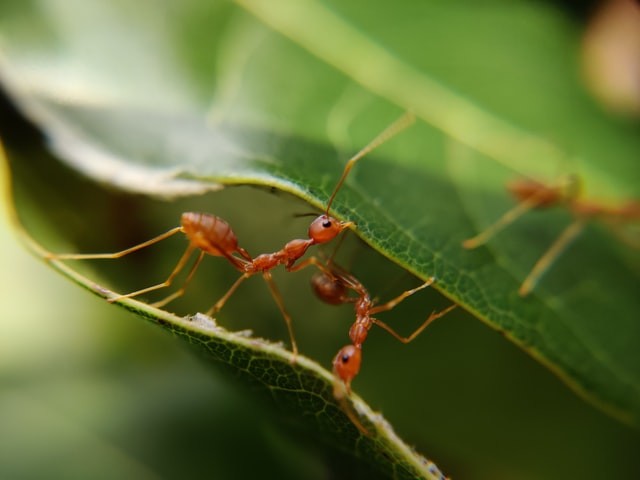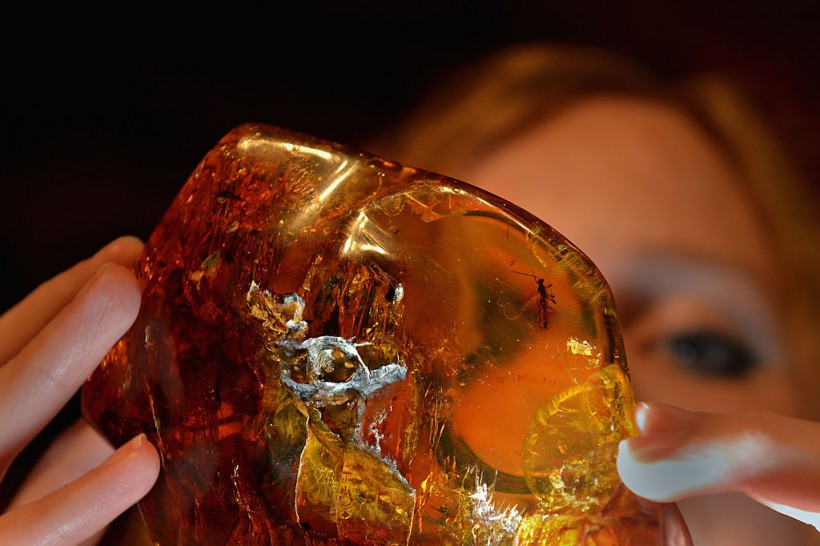Researchers found a new species of extinct ant preserved in amber. An uncommon chunk of African amber contained an extinct ant species previously unknown to science.

Extensive Research
The researchers from Friedrich Schiller University Jena, the University of Rennes in France, the University of Gdansk in Poland, and the Helmholtz-Zentrum Hereon in Geesthacht, Germany, examined the crucial fossil remains from 13 different animals in the amber and realized that they could not be attributed to any previously known species. They used the X-ray light source PETRA III at Hamburg's German Electron Synchrotron (DESY).
New Species
The new species and genus are Desyopone hereon gen. et sp. nov. The researchers are doing this to pay gratitude to the two research facilities-DESY and Hereon-that significantly contributed to this discovery by using cutting-edge imaging methods. In the end, only the combination of substantial phenotype data from scans and recent findings from genomic investigations of real ants allowed for the identification of the new species and genus. In the academic publication Insects, the team publishes a report on their discovery.
As a result of preliminary anatomical comparisons, researchers theorized that the creatures belonged to a species of Aneuretinae, an extremely extinct subfamily of ants that has only been discovered through fossils and one live species from Sri Lanka. However, the high-resolution images produced by synchrotron micro-computed tomography allowed them to rethink this identification.
According to Brendon Boudinot, a Humboldt Research Fellow at the University of Jena, "the complicated waist segment and the huge but rudimentary mandibles-the mouthparts-are more recognizable to us from the Ponerinae, a dominant group of predatory ants." The large waist and otherwise unconstructive abdomen are more suggestive of the Aneuretinae, so although having a distinctive look, we have classified the new species and genus to this subfamily.
The findings of this study also help to increase the focus on male ants in evolutionary studies. Males are frequently disregarded because they cannot be properly classified, says ant expert Boudinot. "Research has neglected them for a long time since they have a different body structure than the worker ants, all of which are female." According to our studies, we can learn more about the evolutionary patterns of female ants by comprehending male-specific traits, such as the sex-specific form of the mandible, which also updates the literature on identifying male ants.
Also Read: Ants Can Be Effective Natural Pesticides
Understanding Ambers

Since the amber itself is as unique as the organisms inside, dating the discovery caused some difficulties for the scientists. Although amber has long been used as jewelry by locals in the area, its scientific significance has only recently become apparent to researchers, according to Vincent Perrichot from the University of Rennes. "The piece with these ants is from the only amber deposit in Africa so far that has featured fossil organisms in inclusions. Overall, there are only a few fossil insects from this continent," he says.
Using Cutting-Edge Tech
Only cutting-edge technology makes it feasible to produce research findings like these. Since it is impossible to evaluate the genetic makeup of fossilized creatures, detailed information, and observations of their appearance are particularly crucial. High-resolution imaging methods like micro-computed tomography (CT), which uses X-rays to see through every layer of the sample, can be utilized to gather thorough data.
Combined, these gave rise to intricate three-dimensional representations of the animals' internal architecture that the researchers could utilize to rebuild the anatomy precisely. The only accurate technique to pinpoint the specifics ultimately resulted in identifying the new species and genus.
Related Article: Scientists Discovers Extremely Rare Tardigrade Fossil in a 16-Million-Year-Old Amber
For more news from the animal kingdom, don't forget to follow Nature World News!
© 2024 NatureWorldNews.com All rights reserved. Do not reproduce without permission.

![Tsunami Hazard Zones: New US Map Shows Places at Risk of Flooding and Tsunamis Amid Rising Sea Levels [NOAA]](https://1471793142.rsc.cdn77.org/data/thumbs/full/70325/280/157/50/40/tsunami-hazard-zones-new-us-map-shows-places-at-risk-of-flooding-and-tsunamis-amid-rising-sea-levels-noaa.jpg)



